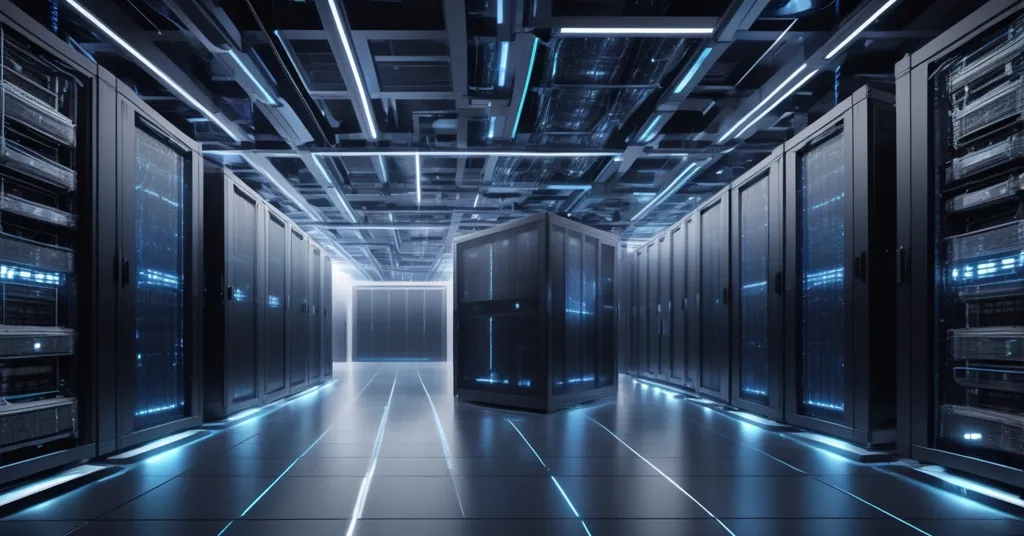AI Meets Crypto: Mining Data Centers Key to Powering AI’s Future

AI and Mining Data Centers: A Perfect Match?
Wondering how to satisfy the world’s growing demand for AI computation? Cryptocurrency mining data centers, with their robust high-density computing infrastructure, could be the unsung heroes in this AI revolution.
- High-density computing
- Dynamic task switching
- Energy challenges
- Grid stability
- Future of data centers
Cryptocurrency mining centers are built for high-density, power-intensive computation, designed for efficiency, uptime, and thermal control. As AI workloads strain global infrastructure with similar computational needs, these mining facilities are uniquely poised to meet the challenge. By upgrading to advanced cooling systems, like immersion and liquid-based technologies, and optimizing power distribution, these centers can transform into versatile hybrid environments capable of handling both crypto mining and AI tasks.
The flexibility of mining data centers is their shining star. They can switch between different computing jobs on the fly, much like a Swiss Army knife of the digital world. Some centers are already dipping their toes in AI training with Field-Programmable Gate Arrays (FPGAs), which are customizable chips that can be tailored for specific computing tasks. This dynamic task switching has shown promising results, with improvements of up to 27-33% in job completion times and a whopping 1.53x reduction in queuing delays. This means mining data centers can fluidly shift between mining and AI inference jobs, offering a cost-effective alternative to traditional hyperscale data centers.
In the US, data centers are a significant drain on electricity, particularly in hotspots like Virginia and Santa Clara. The challenge is real, especially with projections that global electricity demand could more than double by 2030, largely driven by AI. This situation calls for smarter load balancing and a diverse mix of energy sources.
Mining data centers can be key players in maintaining grid stability. With their demand-flexible architecture, they can adjust operations to the grid’s load, soaking up excess renewable energy during peak production and scaling back during low periods. Collaborative efforts in Texas have already shown how mining centers can bolster grid stability by fine-tuning operations according to renewable energy availability.
To tackle AI’s voracious energy appetite, innovative solutions are on the table. Importing electricity from Canada via High-Voltage Direct Current (HVDC) lines and deploying small modular reactors (SMRs) are among the proposed strategies. SMRs, which are smaller, more flexible nuclear reactors, could revolutionize energy supply for AI hubs with their decentralized power generation capabilities.
The future of data centers might look very different from the hyperscalers we’re used to. We could see a shift towards modular, flexible, and geographically distributed infrastructures, led by hybrid centers adept at managing thermal loads, optimizing energy use, and adapting operational models in real time. This new era could blend the needs of AI with sustainability, marking a significant shift in computing infrastructure.
As we navigate this convergence of AI and mining data centers, the potential is vast, but so are the challenges. From scaling up infrastructure to ensuring a sustainable energy supply, the path forward is complex. Yet, with innovation and adaptability, mining data centers could unlock the full potential of AI.
Key Takeaways
How can mining data centers adapt to handle AI workloads?
Mining data centers can adapt by upgrading cooling and power systems and using dynamic task switching to alternate between mining and AI jobs.
What are the challenges of scaling AI infrastructure in the US?
High electricity consumption and the need for smarter load balancing and diverse energy sources are major challenges.
How can mining data centers contribute to grid stability?
They can adjust operations based on grid load, absorbing excess renewable energy and scaling down during low-production periods.
What alternative energy strategies are proposed for meeting AI’s power needs?
Importing electricity from Canada via HVDC lines and using small modular reactors (SMRs) are proposed solutions.
What does the future of data center infrastructure look like in the AI era?
The future involves modular, flexible, and geographically distributed infrastructure, managed by hybrid centers.
“Cryptocurrency mining centers were built on the premise of high-density, power-intensive computation – optimized for efficiency, uptime and thermal control.”
“By upgrading cooling systems – particularly through immersion and liquid-based technologies – and optimizing power distribution infrastructure, mining data centers can become hybrid environments.”
“Numerous research shows that global electricity demand could more than double by 2030, largely due to AI.”
“Designed with demand-flexible architecture, they can pause or throttle operations based on grid load, absorbing excess generation during peak renewable output and scaling down during low-production periods.”
“Rather than defaulting to hyperscalers, the future may be modular, flexible and geographically distributed, led by hybrid centers that know how to manage thermal loads, optimize for cost per watt and shift operational models in real time.”



